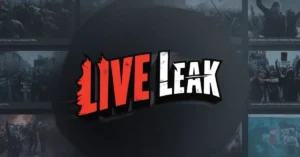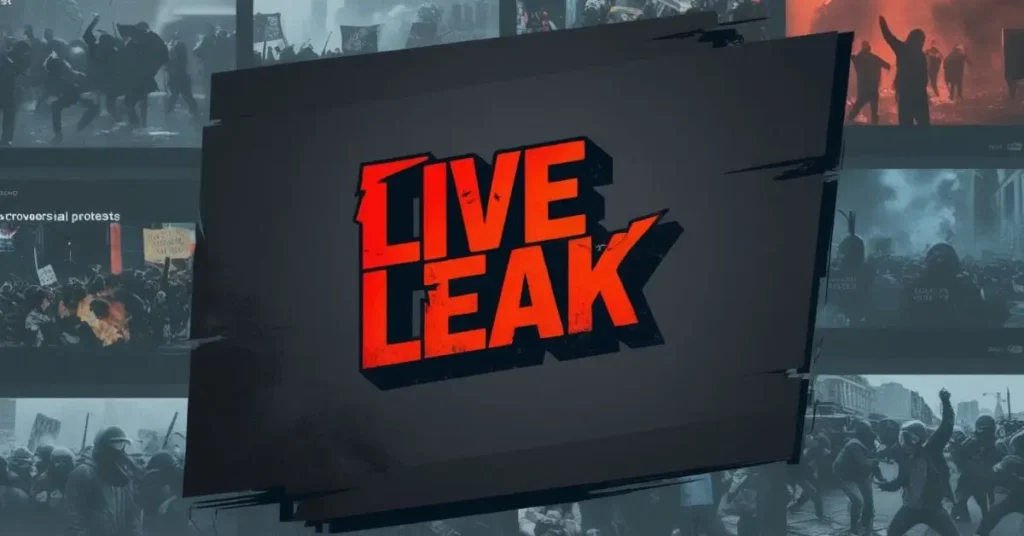Live Leak was a video-sharing platform that gained notoriety for its unfiltered and often controversial content, ranging from raw footage of world events to explicit videos that mainstream media avoided. Launched in 2006, LiveLeak positioned itself as a platform that celebrated the power of citizen journalism and allowed users to share content that traditional outlets might censor. This article explores the rise and fall of LiveLeak, its impact on the digital world, and its enduring legacy in the realm of online media.
What is Live Leak?
LiveLeak was founded in 2006 by Hayden Hewitt and a team of developers who were previously associated with the site Ogrish.com, known for its graphic content. The platform aimed to provide a space for videos that showcased the raw and often brutal reality of world events, offering an alternative to the sanitized news coverage typical of mainstream media.
The platform’s tagline, “Redefining the Media,” encapsulated its mission to challenge conventional journalism by allowing users to upload content directly, with little to no editorial filtering. This approach democratized news dissemination, placing the power of reporting in the hands of ordinary people. From war zones to political protests, LiveLeak was home to videos that other platforms deemed too sensitive or graphic.
Evolution of Live Leak
In its early years, LiveLeak quickly attracted a user base interested in its uncensored and raw video content. The site’s popularity surged during major global events, such as the Arab Spring and various military conflicts, where citizen journalists provided on-the-ground footage that mainstream news channels lacked.
Throughout its evolution, LiveLeak made several changes to its platform and policies. Initially, it was a haven for shock videos, but over time, it sought to strike a balance between its open-content philosophy and the increasing scrutiny over violent and graphic material. This shift was partially driven by the platform’s desire to be seen as a legitimate media outlet rather than a fringe website.
LiveLeak’s interface was relatively straightforward, with videos categorized under various themes like politics, war, and entertainment. The site allowed users to rate and comment on videos, fostering a community that was both engaged and often contentious. Despite attempts to moderate content, the platform remained a lightning rod for criticism due to the nature of its videos.
Content and Features

LiveLeak’s content was diverse, spanning multiple genres but with a strong focus on current events and reality-based footage. The platform became synonymous with videos that other sites refused to host, such as combat footage, police brutality, and various forms of civil unrest. This approach appealed to those seeking unfiltered access to world events, free from the editorial biases of traditional news outlets.
One of LiveLeak’s defining features was its commitment to transparency and freedom of speech. Unlike YouTube, which frequently removed videos for violating community guidelines, LiveLeak was more lenient, allowing content that was informative, albeit graphic. This policy attracted a niche audience but also led to accusations of irresponsibility, as the site sometimes hosted videos depicting extreme violence or sensitive geopolitical incidents.
Impact on Journalism and Media
LiveLeak had a profound impact on journalism, particularly in the realm of citizen reporting. The platform enabled ordinary individuals to become frontline journalists, capturing and sharing videos that often told stories mainstream media missed or chose not to show. During the Syrian Civil War, for instance, LiveLeak became a critical source of firsthand footage, showing the realities of conflict that were otherwise underreported.
This direct-to-viewer model empowered people worldwide to witness events without the filter of traditional news organizations, promoting a form of transparency that was both celebrated and criticized. While LiveLeak helped bring important stories to light, it also sparked debates over the ethics of broadcasting graphic content without proper context or commentary.
Controversies and Criticisms
LiveLeak’s commitment to unfiltered content led to numerous controversies. The site frequently came under fire for hosting videos that depicted graphic violence, including executions, accidents, and other disturbing content. Critics argued that LiveLeak’s hands-off approach to content moderation made it complicit in sensationalism and the spread of harmful material.
One of the most notorious incidents was the site’s hosting of the video depicting the execution of journalist James Foley by ISIS. While some defended the platform’s decision to show the harsh realities of terrorism, others condemned it as a gross exploitation of a tragic event. This incident, among others, highlighted the ongoing tension between the freedom of information and the responsibility to protect audiences from distressing content.
Legal challenges were another significant issue for LiveLeak. Various countries attempted to block the site due to its refusal to remove certain videos, sparking debates over censorship and the boundaries of free speech. Despite these challenges, LiveLeak maintained that its mission was to provide a platform for content that other outlets would not touch, arguing that such videos were crucial for understanding the world’s complexities.
Comparison with Other Platforms
LiveLeak was often compared to other video-sharing platforms like YouTube and Vimeo, but it carved out a unique niche. Unlike YouTube, which increasingly focused on family-friendly content and advertising revenue, LiveLeak prioritized raw and unedited footage. This distinction made it both a popular destination for viewers seeking authenticity and a target for those concerned about the potential harm of such unregulated content.
While Vimeo and Dailymotion also hosted user-generated content, they imposed stricter guidelines, positioning themselves as safer, more polished alternatives. LiveLeak’s less restrictive approach allowed it to host videos that others would immediately take down, but this freedom came with the cost of being labeled as a hub for violent or controversial content.
Shutdown of LiveLeak
In May 2021, LiveLeak unexpectedly shut down, ending its 15-year run as one of the internet’s most contentious video platforms. The shutdown was announced by founder Hayden Hewitt, who cited the evolving digital landscape and the need to move on to new projects. Hewitt emphasized that the decision was not due to external pressures but rather a natural conclusion to the platform’s journey.
The closure marked the end of an era for a platform that had become a go-to source for raw, unfiltered footage of global events. While some users mourned the loss, others felt it was a necessary step in an age where content moderation and ethical considerations had become paramount. The shutdown also prompted discussions on the future of similar platforms and the challenges they face in balancing free speech with responsible content management.
Legacy and Influence
Despite its controversies, LiveLeak’s legacy as a pioneer in citizen journalism and unfiltered media endures. The platform influenced the creation of other sites that sought to emulate its model, though few managed to capture the same level of public attention. LiveLeak’s approach to user-generated content has left a lasting impact on how news is shared and consumed in the digital age.
Moreover, Live Leak existence raised important questions about the role of platforms in moderating content and the ethical implications of showing real-world violence. It challenged the status quo of media consumption, pushing the boundaries of what was considered acceptable in public discourse. Today, as debates over content moderation and free speech continue to rage, LiveLeak’s influence can still be felt in the policies and practices of newer platforms.
Conclusion
Live Leak was more than just a video-sharing site; it was a symbol of the power and perils of unfiltered media. By allowing users to share the stark realities of the world, it offered an unvarnished view of events that traditional outlets often sanitized. However, its commitment to this rawness also led to significant ethical and legal challenges, ultimately contributing to its closure.
As we look back on Live Leak impact, it’s clear that the platform played a crucial role in shaping the landscape of digital media. Its legacy lives on in the ongoing debates about the balance between freedom of expression and the need for responsible content management. While LiveLeak is no longer active, its influence on the digital world remains undeniable, reminding us of the complexities involved in redefining media in the modern age.
FAQs
- What was LiveLeak known for?
LiveLeak was known for hosting raw, unfiltered videos, often depicting graphic content related to current events, politics, and world conflicts. It gained a reputation for being a platform that allowed citizen journalism and videos that mainstream media would avoid. - Why did LiveLeak shut down?
LiveLeak shut down in May 2021. According to the founders, the decision was made as a natural end to the platform’s journey, not due to external pressures. They expressed a desire to move on to new projects and adapt to the changing digital landscape. - What made LiveLeak different from other video platforms?
Unlike other platforms like YouTube, LiveLeak was more lenient with its content policies, allowing graphic and controversial videos. It focused on citizen journalism and provided a platform for videos that showed real-world events without the censorship commonly found on other sites. - Can you still access LiveLeak videos?
Since the platform shut down, LiveLeak videos are no longer accessible through the original site. Some videos might still be available on other platforms or archived by users, but LiveLeak itself is no longer active. - What are the alternatives to LiveLeak?
Alternatives to LiveLeak include platforms like BitChute, DTube, and other decentralized video-sharing sites that prioritize freedom of speech and less restrictive content policies. However, none have fully replaced LiveLeak’s unique position in the digital landscape.







